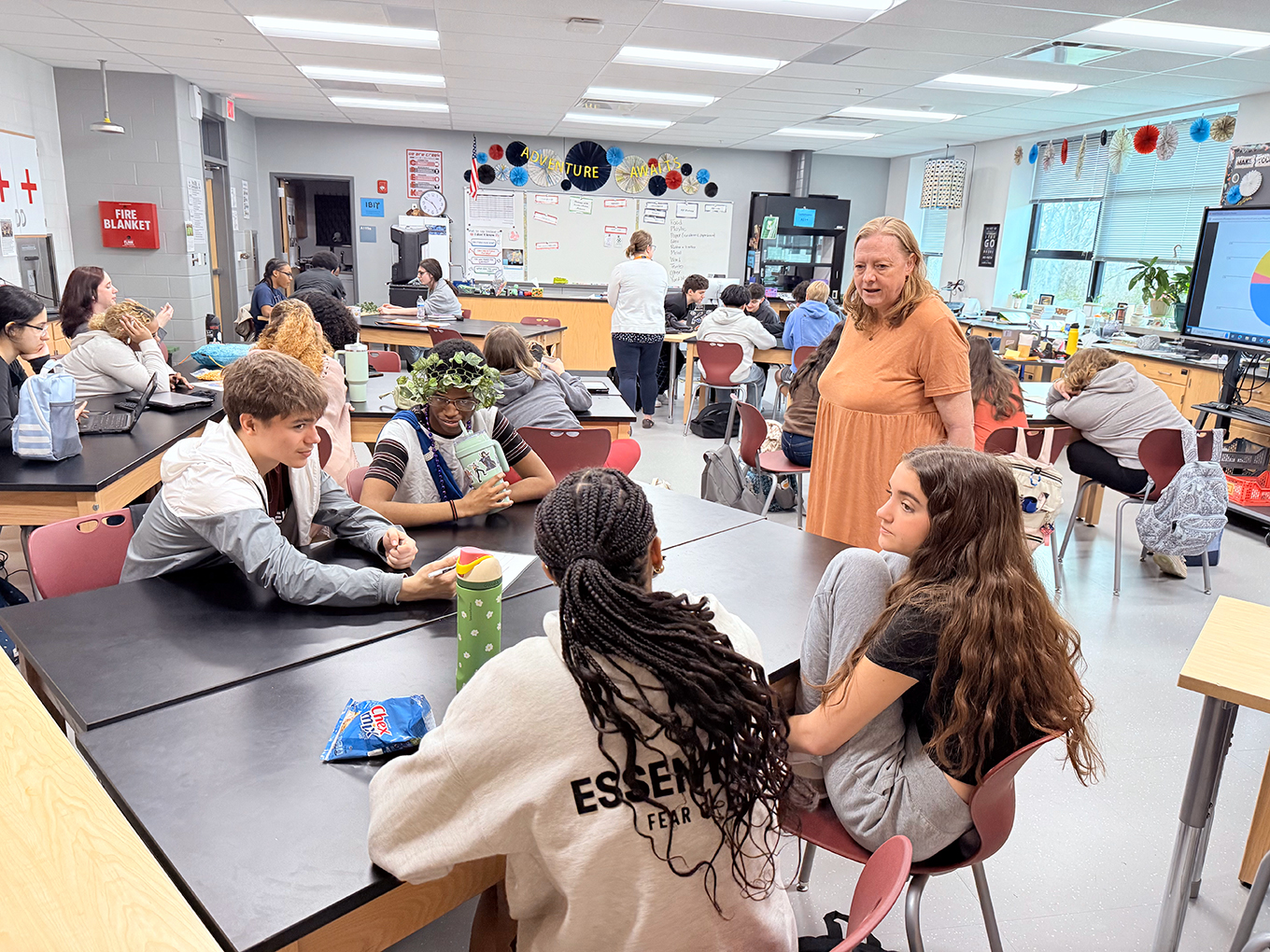Since 2009, the Literacy Design Collaborative (LDC) has been partnering with Kentucky teachers to create rigorous, authentic to the discipline, writing-in-response to reading assignments.
LDC’s mission embraces the idea that educator learning must be job-embedded; that the stakeholders in an educational system must be invested in order to ensure equity for all students. This comes in the form of building coach, leadership and teacher capacity using a comprehensive support model, while pairing this learning with backward design, standards-based curricula to transform classroom literacy practices and generate authentic learning and real gains for students.
LDC’s work in Kentucky is about helping teachers create quality assignments in order to generate quality results from students. Although the full results of LDC’s work in the Commonwealth are yet to be measured, based on the group’s work in the New York City Public Schools and Los Angeles Unified School District, the potential is exciting. After one year of LDC implementation, the English language arts standardized testing scores of Los Angeles middle school students demonstrated five months additional learning over matched-pair students (controlling for prior performance and student demographics). New York City students demonstrated seven months additional learning.
LDC’s work in Kentucky and other areas throughout the United States has created insights into how to best use the limited time that teachers have with students every day. Teachers who have partnered with LDC in the past know about the incredible efforts that go into drafting just one standards-aligned, Stanford Center for Assessment, Learning and Equity-rated assignment. Whether written on their own, adapted from the LDC curriculum library or as part of a professional learning community using LDC’s blended online learning resources and professional development courses, it wasn’t unusual for teachers to spend up to eight weeks creating one rich, engaging two-to-four week assignment (what LDC calls modules).
It has been time well spent. As TNTP’s 2018 report “The Opportunity Myth” found, while 71% of students were succeeding on their assignments, students were only receiving grade-level assignments 17% of the time. The backwards-designed, standards-aligned LDC modules Kentucky teachers created served to push against this statistic, providing students with rigorous assignments that would prepare them to be college, career and community ready. The challenge, however, was that not all teachers had the time to create these modules, which meant that not all students had an opportunity to engage with this kind of curriculum.
In 2019, LDC launched the LDC Anchor Curriculum to immediately impact student outcomes and model high-quality Tier 1 instruction for teachers. With 130 assignments available, the curriculum ties together the four highest-leverage standards pairs (R2, R3, R4, R7, and R8) that support students in demonstrating their learning through authentic reading and writing, science, social studies, and math disciplinary products. By holding a set number of assignments in common during each quarter, LDC Anchor Modules allow schools and districts to create a set of example papers at each score level, use a common rubric to calibrate and set expectations across classrooms,. By integrating just one anchor module a quarter in a discipline or grade level, schools and districts can expect to see significant gains in student achievement.
In Daviess County, for example, teachers are using LDC Anchor Modules as common assignments, establishing a system that engages students in disciplinary-specific literacy in grades K-12. By implementing the LDC anchor curriculum, Daviess County has created a cohesive structure where students are engaging in content vertically based upon the depth and rigor of the Kentucky Academic Standards for Reading and Writing.
“We have had quite an influx of new teachers who aren’t at the point in their learning that they can be curriculum authors,” said Jeanette Barreiro, teacher induction coach for Daviess County. “So we decided to pull on the anchor curriculum, especially for working with our new teachers in implementing quality modules, written for a shorter time frame.
“Additionally, we are beginning to work at vertical alignment of standards at several of our schools. Some content areas have adopted curriculums that are vertically aligned, but for the contents and schools that are not at that point in curriculum adoption, the LDC anchor curriculum has allowed our teachers to work with a structure to implement high-quality assignments.
For example, while students are engaging in standards-aligned assignments that ensure cohesion from the task, to the skills list, to the instruction, teachers learn and reflect through the practice of unpacking anchor modules prior to teaching in order to recognize that standards alignment. Teachers also analyze the anchor module rubric, paying special attention to the LDC Reading Rubric scoring elements, which are specifically designed to assist in evaluating the level of thinking demonstrated according to the module’s reading focus standard.
Additionally, in line with LDC’s model of comprehensive support, this work is being rolled out by individual schools, and teacher leaders within these schools are using the LDC Curriculum Analyzer course along with the LDC Anchor Modules to coach and support others. Currently, 25 teacher leaders are engaged in this work districtwide in Daviess County; the goal is for each of those teacher leaders to bring on two or three more colleagues every year to guide and share the learning.
Through this process, teachers are learning how to recognize quality assignments aligned to standards,” Barreiro said. “They are also getting a chance to execute modules that are built with similar structural components, which will assist teachers in developing pedagogical moves and having discussions around teaching and learning regardless of content area.”
Ultimately, what makes the LDC Anchor Curriculum unique is that rather than be organized by teacher inputs (the moves the teachers will make), the focus is on student outputs: the standards the students will master, the skills the students will develop and the writing products the students will produce. As Daviess County is already finding, this shift from input to output is transforming results in student work not just at the classroom level, but in the district as a whole.

Maria Derivan-George
Maria Derivan-George serves as the facilitation manager at Literacy Design Collaborative (LDC). Her experiences with LDC help her support the facilitation and continued learning of education professionals through both on-site and virtual workshops and supports. She taught high school English in North Carolina for several years before moving into direct support of teachers as a school improvement coach in Alabama, South Carolina, North Carolina, Illinois, Louisiana and Pennsylvania.

Barrie Olson
Barrie Olson is the director of academic and professional learning at LDC. She ensures that the design, delivery and quality of LDC’s resources support the organization’s vision for equity for all students and support for all educators. Prior to joining LDC, Olson was a writing and communication consultant. She has taught writing, communication and literacy at the University of Nevada, Reno, the University of Louisville and the University of Cincinnati, Blue Ash College.




Leave A Comment